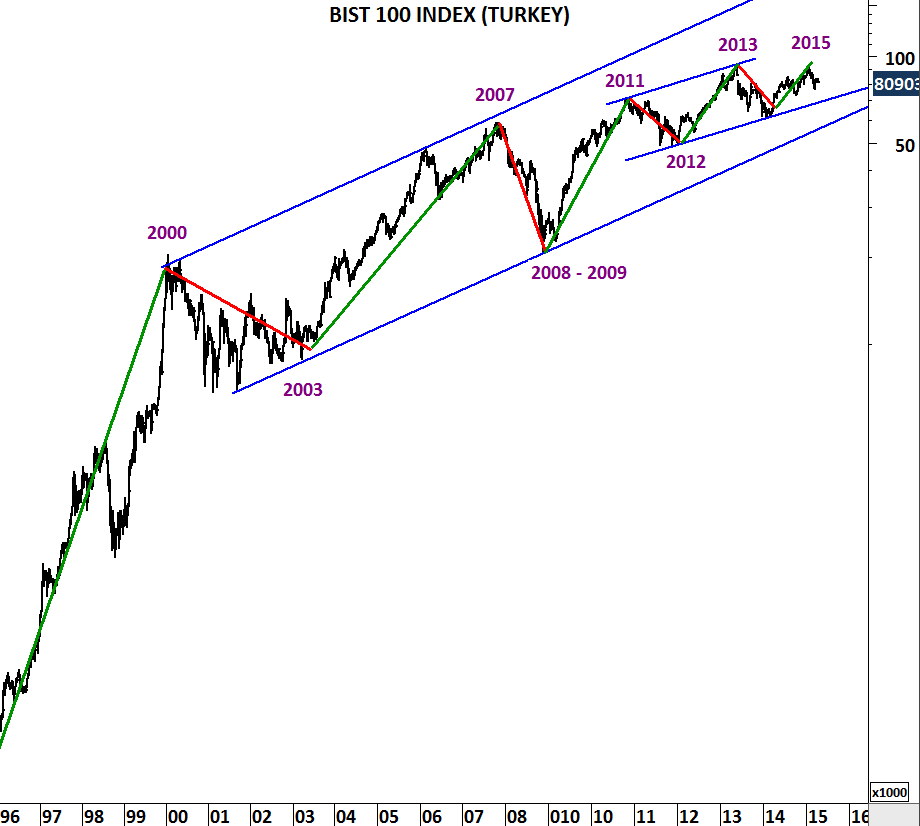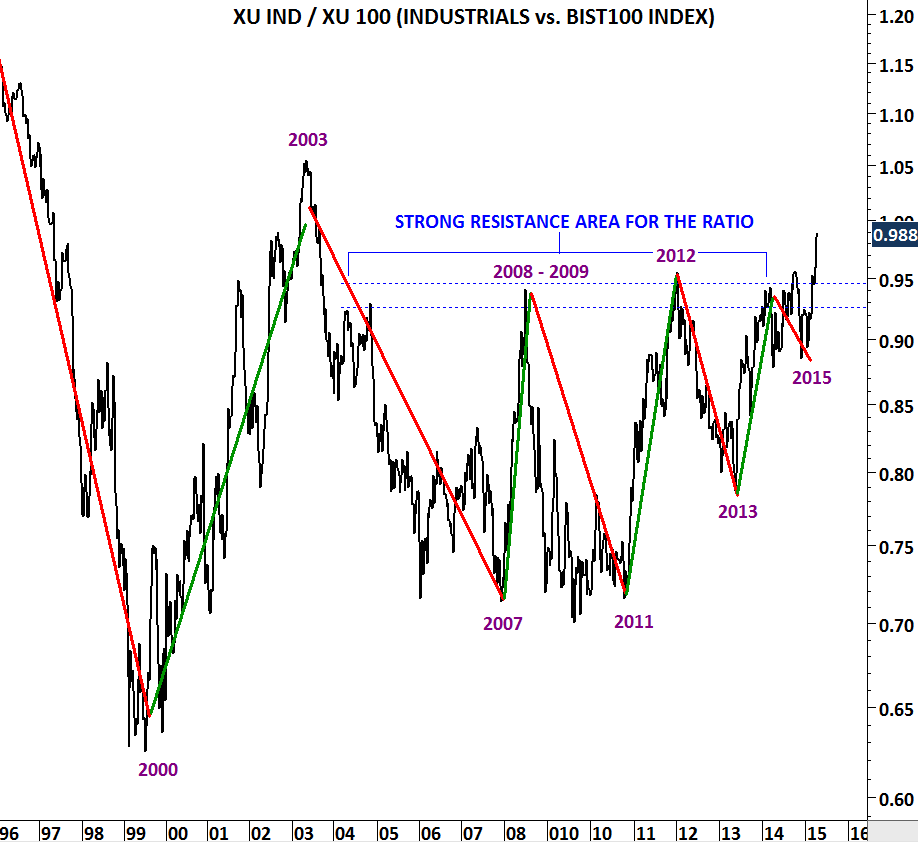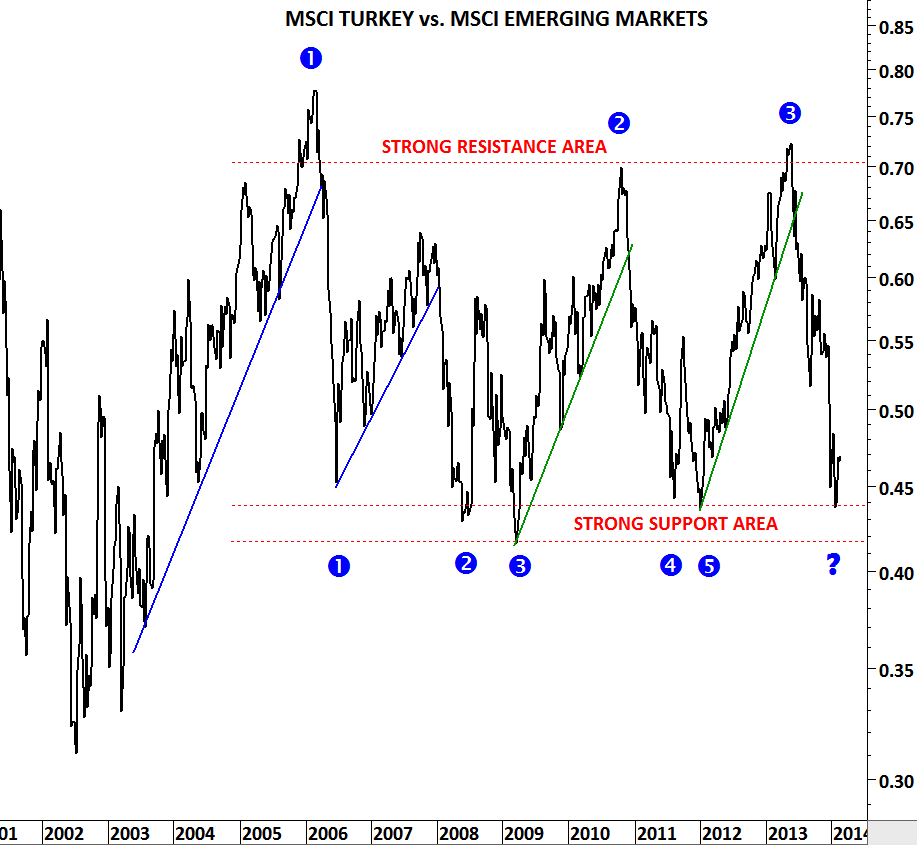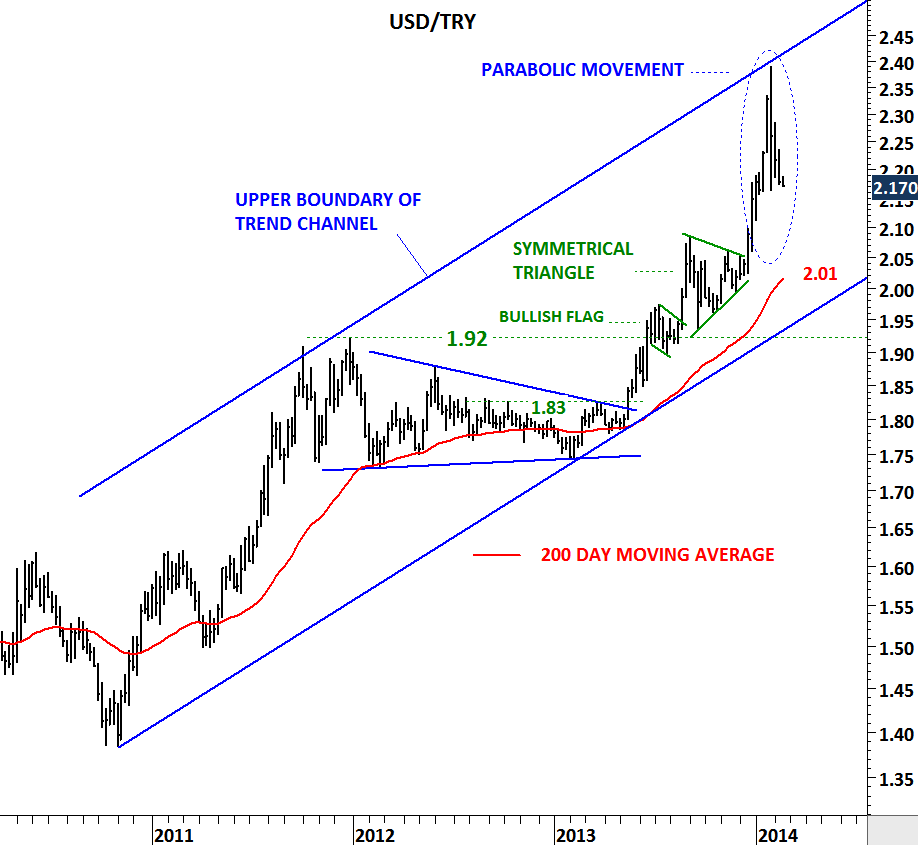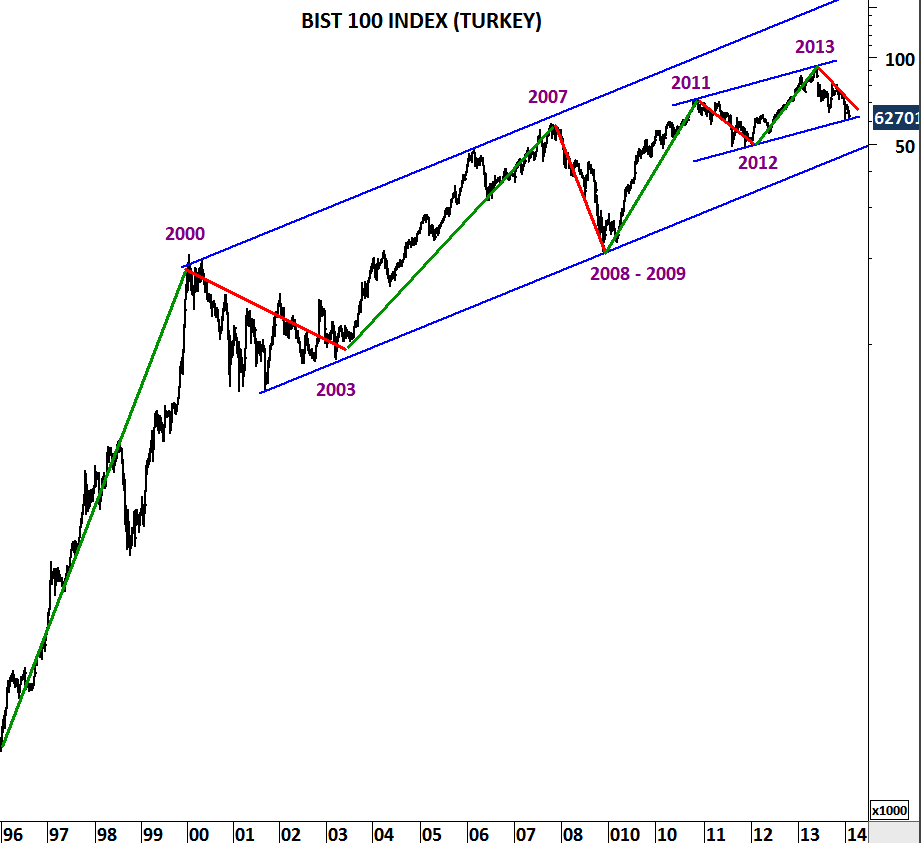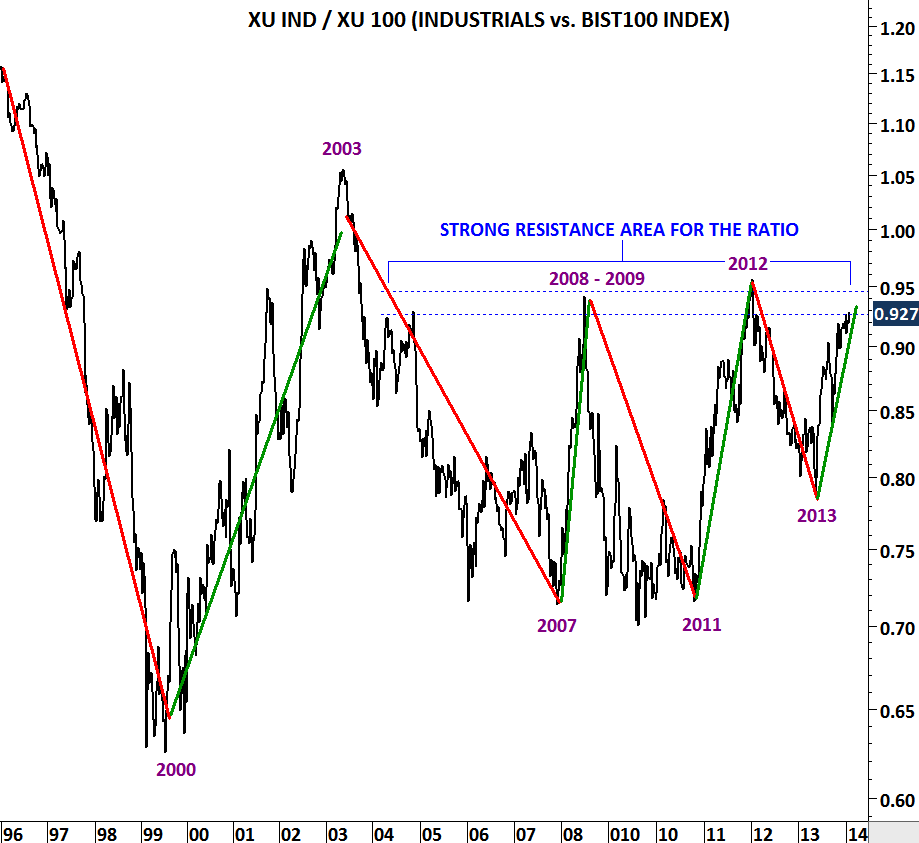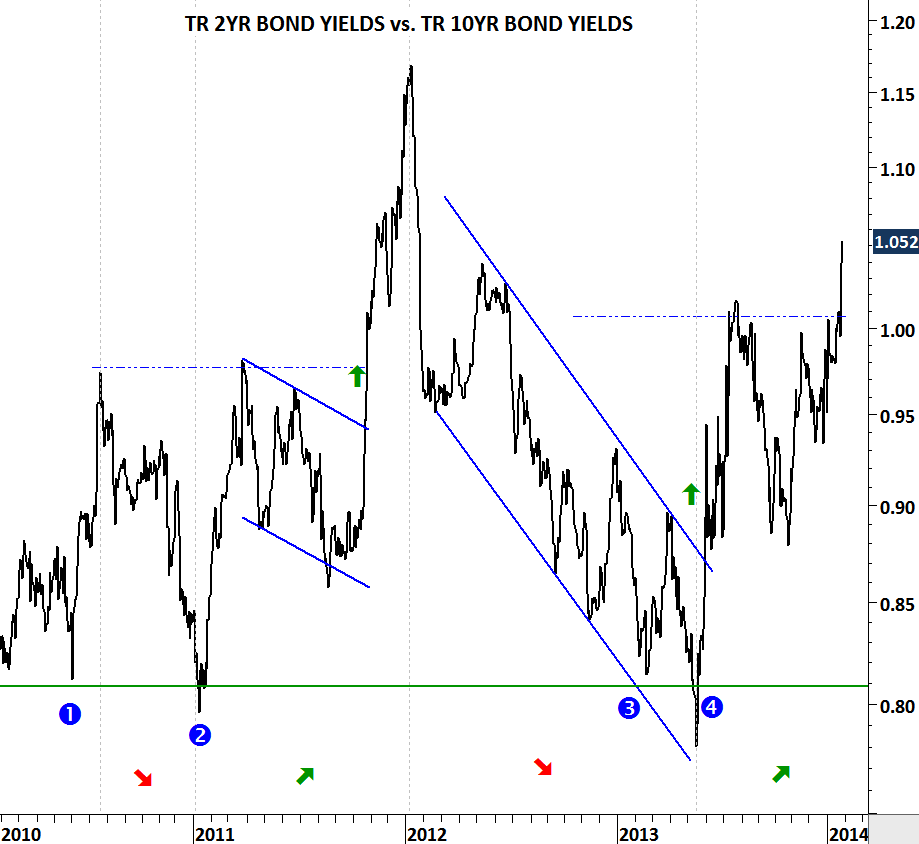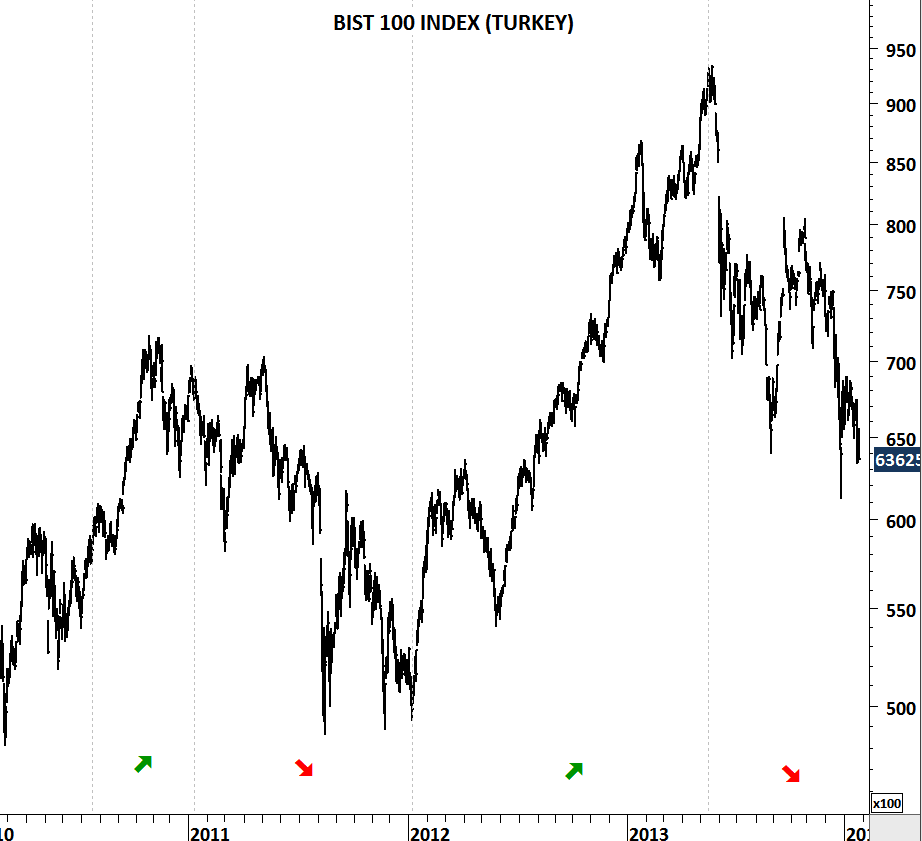Turkish financial sector has been strong over the past few weeks. I don’t have the deep knowledge or the resources to understand the reasoning behind this. I would welcome any thought. But here, I’d like to share some chart evidence that supports further strength in the banking and financial sector stocks in the coming months. I’d also like to draw your attention to the latest bullish development on the Turkish government bond yields (which could have a positive impact on the financial sector).
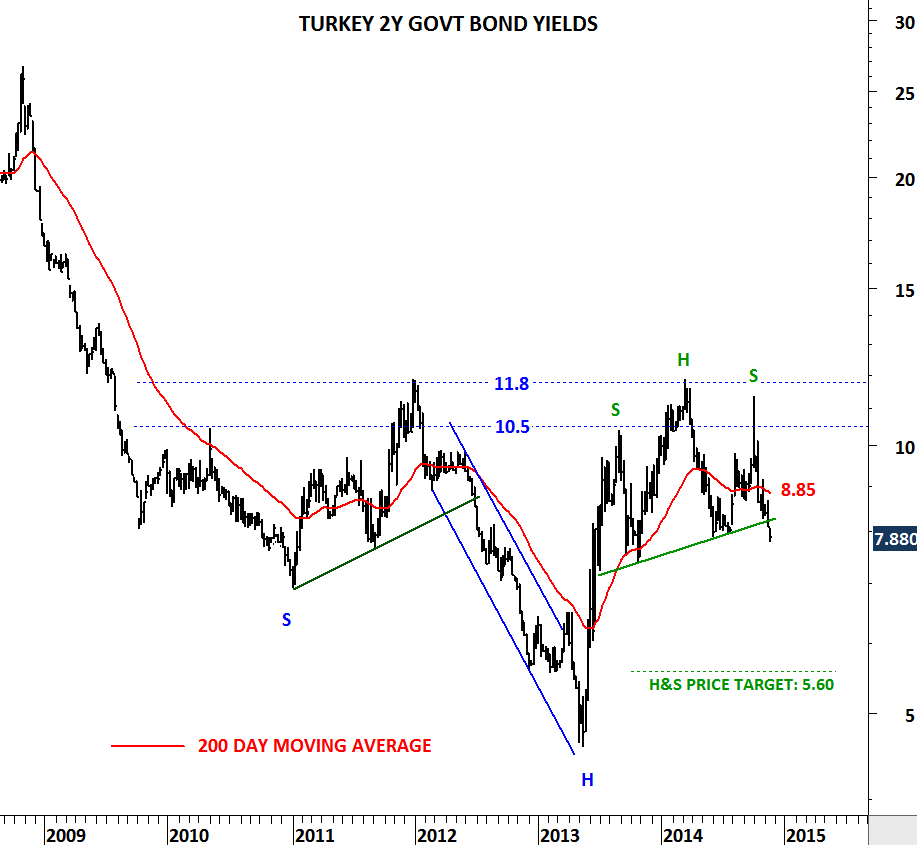
In September yields were targeting 11.8 levels. That direction would have been disastrous for the Turkish economy. In October we have seen a “V” reversal changing the whole picture to a more bullish one. 2 YR government bond yields can now target 5-6 area in the coming months.

Industrials vs. BIST 100 is a chart that I keep track of since 2003. When industrial sector outperforms it usually signals underperformance for the financial sector and this coincides with market corrections. XU IND/ XU 100 ratio is now reversing from a multi-year resistance suggesting financial sector outperformance and industrial underperformance.
Long-term chart patters are usually very powerful. When I see major chart patterns developing on long-term scale I pay close attention. Below are some of the financial sector stocks that has formed bullish chart patterns. Latest chart patterns or consolidations can be compared with 2010-2012 periods. I think they are similar.

HALKBANK is forming a year-long inverse head and shoulder. Neckline stands at 16.80 levels
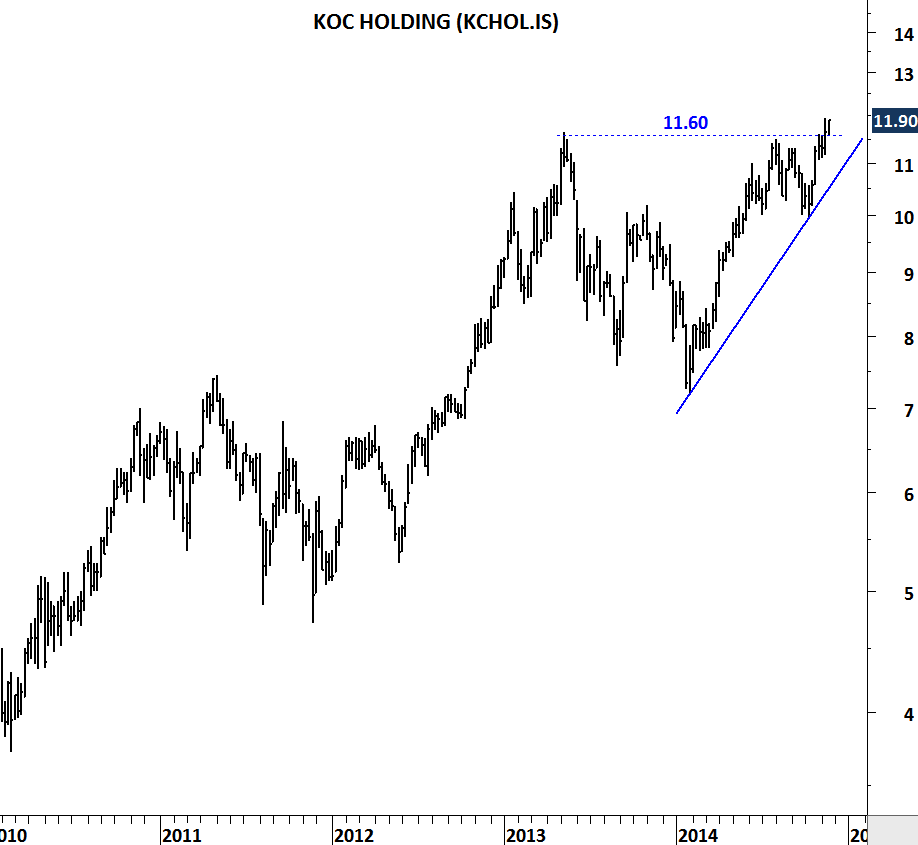
KOC HOLDING breaks out to all-time high levels. This is a bullish development.
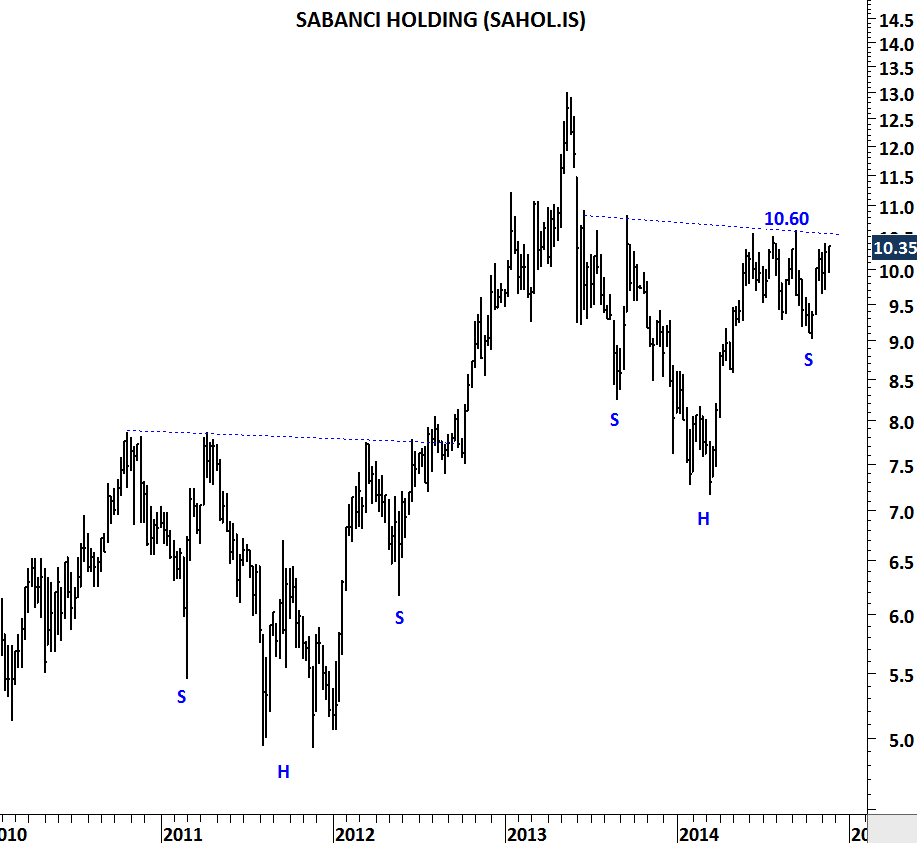
SABANCI HOLDING formed a year-long inverse head and shoulder. Breakout above 10.60 will be very bullish.
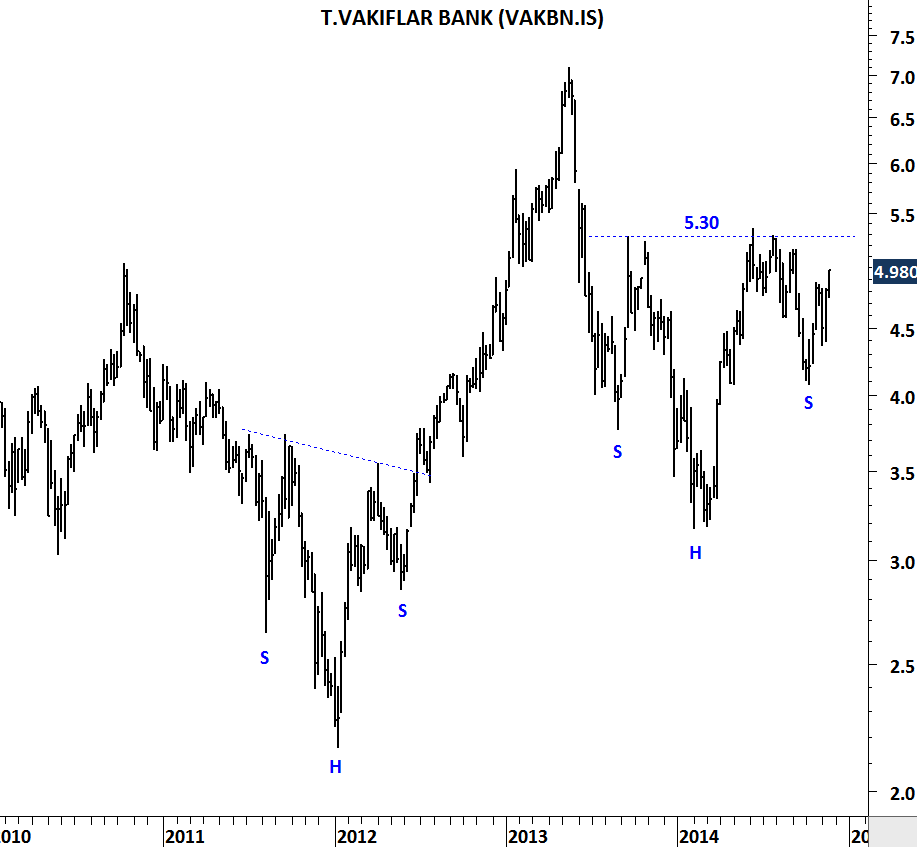
VAKIFLAR BANK formed a year-long inverse head and shoulder with bullish implications. Breakout above 5.30 will be very positive for the stock.
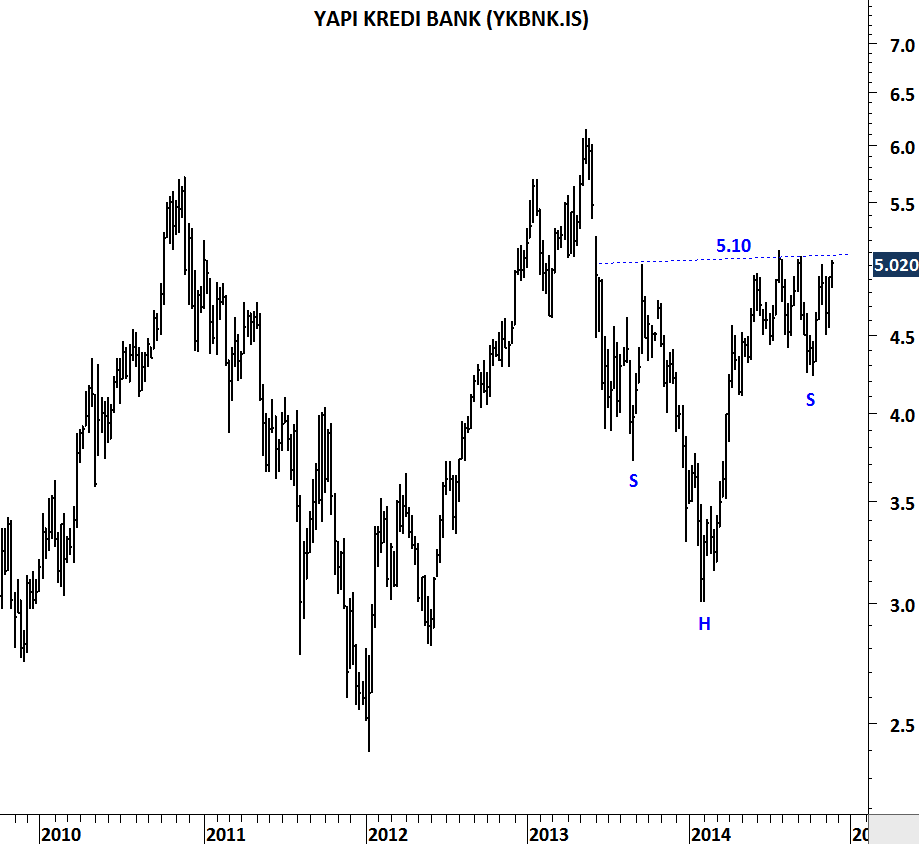
Another inverse head and shoulder chart pattern can be seen on YAPI KREDI BANK.

